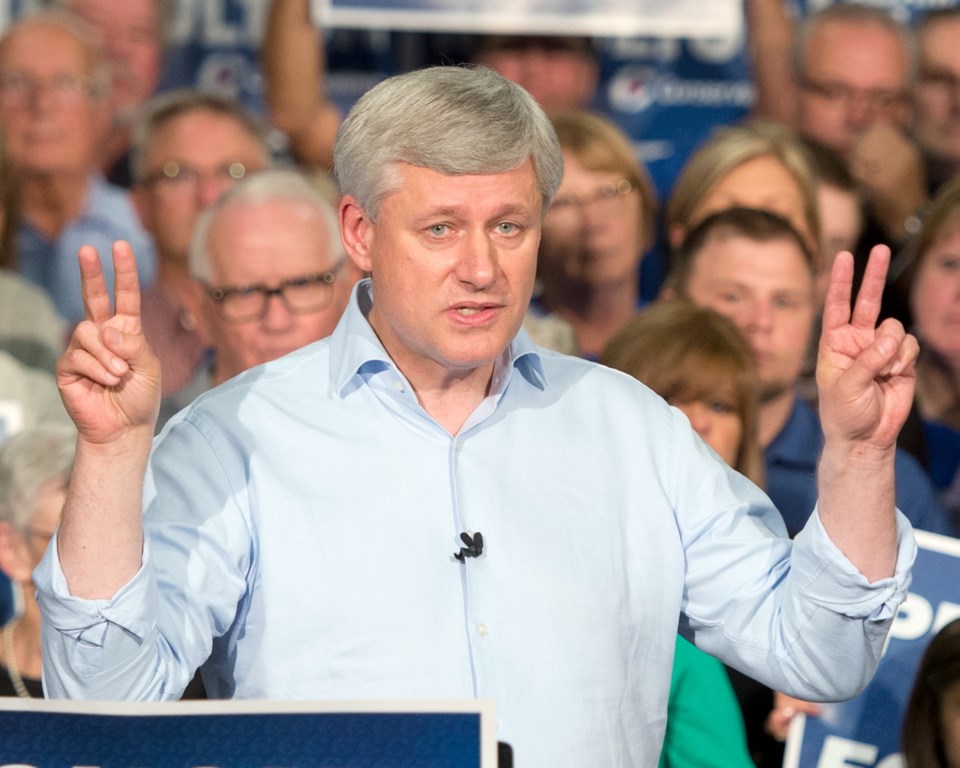OTTAWA — “Small business is the backbone of the middle class and the backbone of the Canadian economy. That’s why among our investments, cutting taxes for small businesses has been a key.” — Conservative Leader Stephen Harper.
———
Heading into the election, the big three parties were hoping to court the vote of the hundreds of thousands of small businesses in the country.
The Conservatives, NDP and Liberals have all agreed to drop the small business tax rate to nine per cent from the current 11 per cent — a pledge outlined in the 2015 budget. During Thursday night’s debate, Conservative Leader Stephen Harper argued the cut would help improve Canada’s job numbers as more small firms hire as a result of the tax break.
So does a tax break for small business actually help create jobs?
———
More Baloney Meter stories
- Baloney Meter: Has the UN asked Canada to take 9,000 refugees by Christmas?
- Baloney Meter: Will cancelling F-35 ‘crater’ the Canadian aerospace industry?
———
Spoiler alert: The Canadian Press Baloney Meter is a dispassionate examination of political statements culminating in a ranking of accuracy on a scale of “no baloney” to “full of baloney” (complete methodology below).
This one earns a rating of “some baloney” because research suggests a general tax cut doesn’t necessarily lead to jobs.
Here’s the lowdown.
The facts
According to Industry Canada, 98 per cent of all firms in Canada can be considered small businesses. When it comes to net job creation, small businesses created 77.7 per cent of all private-sector jobs from 2002 and 2012, the most recent numbers available. The Industry Canada report calculated that on average, small businesses created a little over 100,000 jobs annually during that time.
Those small businesses, or Canadian-controlled private corporations, use the small business tax rate of 11 per cent for the first $500,000 of income. Go over that and then they would be subject to the general corporate tax rate of 15 per cent.
A company claiming the maximum under the current 11 per cent tax rate would be paying about $55,000 in federal taxes. Drop the level to nine per cent and the amount drops to $45,000, a savings of about $10,000. (The figures are outlined in the 2015 federal budget document.)
Research from noted economist Jack Mintz suggests the savings aren’t enough to prod investment because some companies may not want to grow beyond the $500,000 limit and face a higher tax rate.
The Canadian Federation of Independent Business, which represents 109,000 small and medium-sized businesses in the country, argues the reduced tax rate for smaller companies is designed to “offset the inherent, natural disincentives to grow,” CFIB chief economist Ted Mallett said in a news release this week.
The experts
It’s not clear whether a tax cut alone would create jobs, experts say.
Jennifer Robson, assistant professor from Carleton University’s school of political management, said businesses that gain from paying less tax could put the money into capital investments, or more employees, or do neither. Much of the decision is based on how comfortable the company is spending more than it has before.
As well, the tax break itself isn’t tied directly to the cost of labour, Robson said, so it isn’t clear whether a company would put the money into hiring more employees.
“There is this fundamental uncertainty about whether small businesses will use this money directly to hire more people, because a general tax rate cut is quite a blunt instrument,” she said. “It doesn’t do anything in terms of sending a signal to the business owner about how they should use the tax cut.”
Lindsay Tedds, associated professor from the University of Victoria’s school of public administration, tweeted during Thursday’s debate that some businesses will reinvest their savings, which could create jobs. However, surveys and research suggest that more small businesses — many of which are owned by what she called “lifestyle owners” — don’t reinvest the money.
Pointing to research first published in the early 1990s, Tedds argued that small businesses kill as many jobs as they create.
Of those that do create jobs, she wrote, a very small proportion can be considered “super growers.”
“That is where the jobs growth comes from.”
The verdict
What Canadians heard Thursday night contains “some baloney,” according to the CP scale. It’s not clear if companies would invest in new jobs, but those that do are likely to be the “super growers” where the growth comes from. As Tedds tweeted when the statement was first made, “lowering taxes on small businesses provides an incentive not to grow. Taxes do not impede small business, compliance does.”
(The Canadian Federation of Independent Business, which supports the tax rate cut, might agree with the latter part: the group said earlier this year that red tape costs one small business employee 185 hours a year — or more than a month of her time. But that’s a Baloney Meter for another time.)
Methodology
The Baloney Meter is a project of The Canadian Press that examines the level of accuracy in statements made by politicians. Each claim is researched and assigned a rating based on the following scale:
No baloney — the statement is completely accurate
A little baloney — the statement is mostly accurate but more information is required
Some baloney — the statement is partly accurate but important details are missing
A lot of baloney — the statement is mostly inaccurate but contains elements of truth
Full of baloney — the statement is completely inaccurate
Sources
Industry Canada, Key Small Business Statistics 2013
Canadian Federation of Independent Business, costs of business regulations, January 2015
Jack Mintz, “An Agenda for corporate tax reform in Canada,” September 2015 (PDF)
Budget 2015, “Helping Small Businesses and Entrepreneurs Create Jobs” (PDF)



